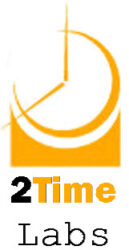A humorous article from the New York Times of June 26th caught my eye for some interesting points that it made about handling emails.
While the main point of the article was to deliver some email advice to someone who is entering public life, I think that some of the advice was mistaken.
While I agree with some of the advice (especially when it comes to dealing with “wackos” who send email) I think the advice about handling email was built on a faulty premise.
The author makes the point that he does not keep an empty inbox, but instead treats his inbox as a rolling todo list. He tried David Allen’s advice to return the inbox tozero (i.e. to empty it) at least once per week, but found that it didn’t work for him. His reasoning was that merely moving the email to a folder didn’t make sense, as he was merely moving messages around from one folder to another, accomplishing little.
He missed the point that I believe Allen is trying to make, and in doing so sets himself for future failure.
The habit he has adopted involves him taking the following steps:
1) reading his email
2) making a mental decision to do something with it later .e.g study it, share it, store it, act on it, etc.)
3) leaving it where he found it (in the inbox)
This might not be a problem for him today, when the number of incoming emails numbers around 150 after a typical spam removal operation. However, if his email were to double or triple in number, his system would encounter difficulties as his inbox would become overwhelming.
What he missed in Allen’s advice was something that many miss, which is the principle or practice underlying the tip thatAllen is giving.
The obscure principle in operation here is that an inbox is a temporary collector of incoming items that will be subject to later processing and immediate removal. When too many items are are acted on with steps 1,2 and 3 above, the result is that items in the inbox become lost in a mountain of past and present messages. This eventually ruins the peace of mind of the user,as the number of decisions that need to be made mushrooms and preys on the mind. While we all have our breaking points, we all crumble when too many time demands are waiting to be processedby our already overloaded mental circuits.
Also, the more email the inbox contains, the more likely it is that information will be lost. This is true for all of us.
He is wrong that merely moving an email to a different folder does nothing — the action by itself frees up the inbox to receive new, clearly viewable inputs. It might not affect his productivity at the moment, simply because the number of time demands entering his life through his inbox is relatively low.
He mentions that he reads email all throughout theday, spending perhaps an hour or so on the task in total. It’s even easie to see here that his current practice won’t scale well — if he were to be promoted and needed to manage a sudden increase in time demands, he could easily spend a half a day going through steps 1-3 for each email he wants to keep in his inbox.
Click here to read the article at the New York Times website.



